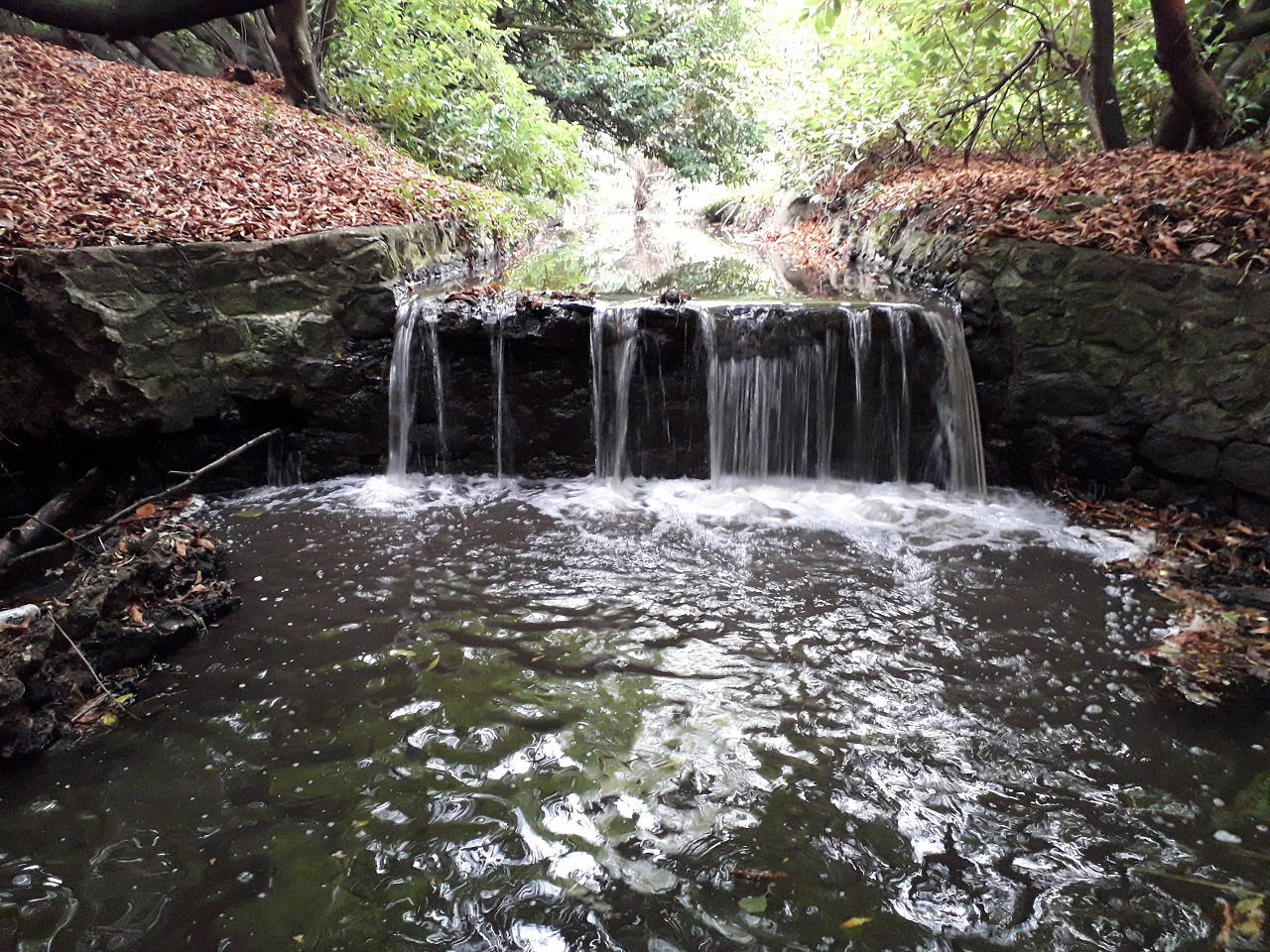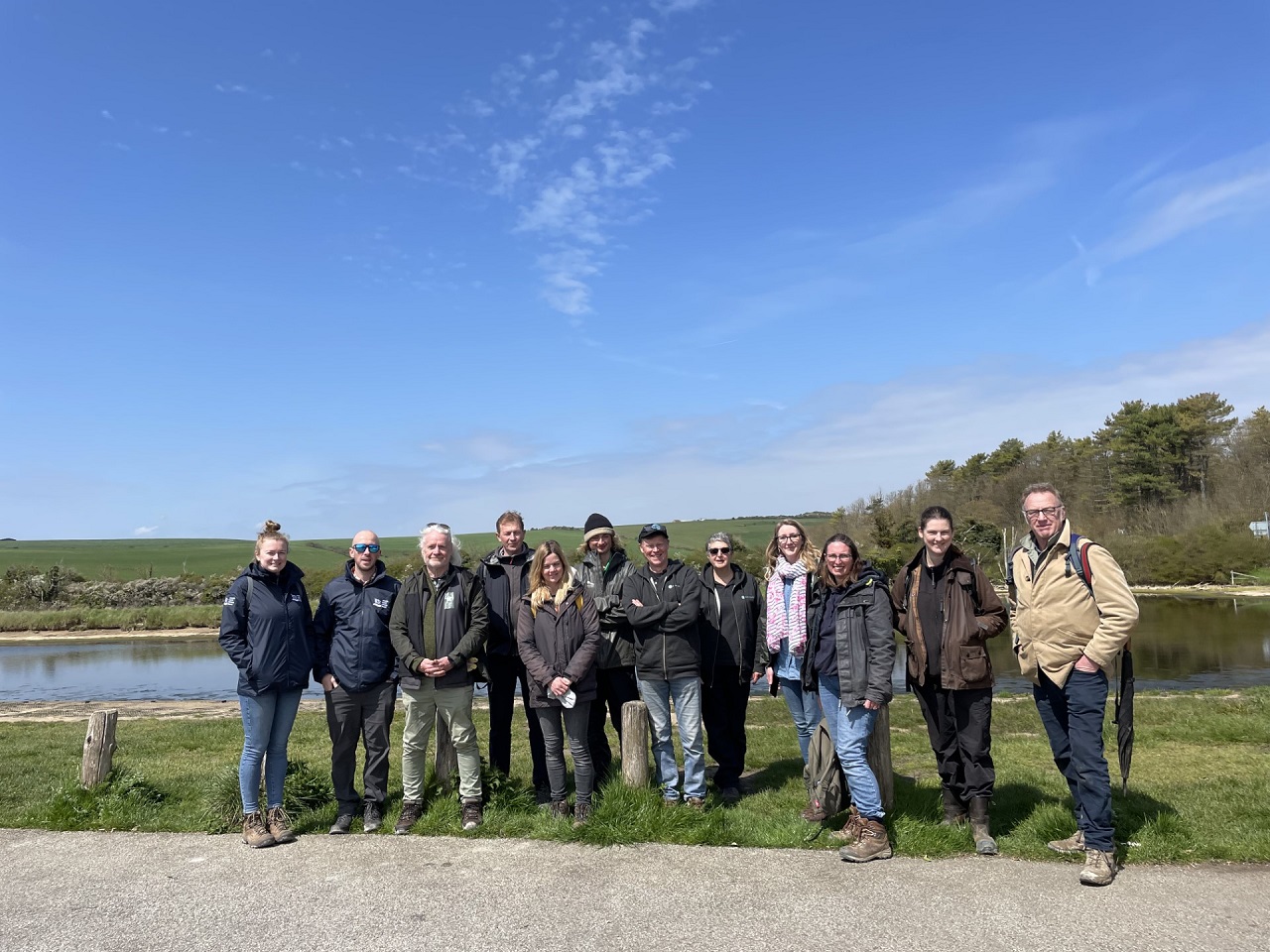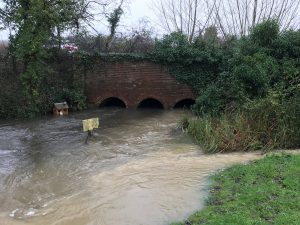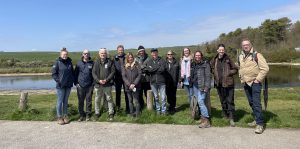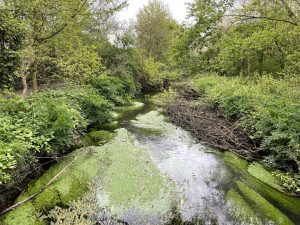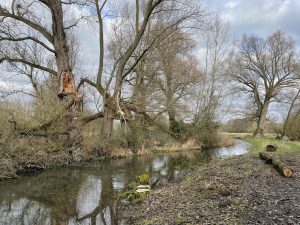In the first of two blogs, Dr Chris Gardner, head of our Science and Partnerships team, outlines some of the problems caused by weirs on habitats and fish. This has a particular focus on the River Darent in Kent, where we have recently carried out several pieces of work as we try to help fish species move along the whole river catchment.
Restoring rivers to help wildlife
The term “river restoration” describes a set of activities that help improve the environmental health of a river or stream. These activities aim to restore the natural state and functionality of the river system to promote improved fish populations, biodiversity, recreation, flood management and development.
Restoration tends to focus on increasing habitat quality and diversity. A popular first step to achieving this is to overcome barriers such as weirs, increasing the access animals have to the existing range of habitats available in the catchment.
Over the centuries, we have adapted rivers for our own use, modifying them to facilitate land use for agriculture and development, navigation, water supply, power generation and other priorities.
Fish and other aquatic organisms evolved in rivers long before humans had this influence, and so they have not adapted to the modifications we have made, such as concrete banks, deep dredged sections, straight uniform channels and weirs, all of which block their passage.
Weirs impact rivers in three main ways
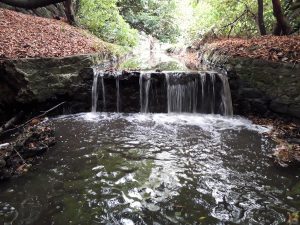
Habitat fragmentation
This is frequently caused by human activities which disrupt the continuity of habitats used by wildlife and is a land conservation issue as well as an aquatic one. Habitats which were once continuous become divided into separate fragments, restricting the movements of organisms (for example fish) and separating them from habitats, natural resources and other fish required for their survival or the completion of their life-cycle.
Fragmented habitats are also less resilient, preventing re-colonisation after pollution incidents and lowering genetic variability because of the restricted, effective population size, potentially placing populations at an evolutionary disadvantage.
River habitat
This is degraded in quality because an enclosed – or “impounded” – area is created upstream. In other words, river-like habitats become lake-like – stiller, with less water flow than a natural river should be. This drowns out natural features such as riffles (a shallow place in a river where water flows quickly past rocks) causing the loss of important spawning and nursery habitats for river fishes, thus lowering the numbers of fish and breeding success.
Rivers are naturally dynamic with erosion and deposition occurring in balance, creating a highly varied mosaic of temporal micro-habitats for all life-stages of fishes.
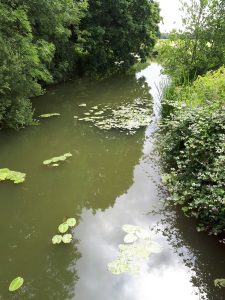
Weirs stop this natural tendency for change, creating a uniform, static environment. Upstream, an over deep river channel, similar to a lowland river, is formed in the impounded area, which might be inappropriate for the fish community (for instance, barbel habitat may become bream habitat). Impoundments also alter the temperature regime, oxygen content and cause sediment build up (siltation) in the upstream impounded area.
Sediment transport
Natural processes, such as moving sediment along a river, are prevented by weirs and instead the sediment stays in one place, covering the riverbed. This inhibits the riverbed’s function as a feeding and breeding ground. In a natural river, sediment (for example gravel) is shaped and sorted by water flow patterns. This creates a large diversity of ever-changing habitat types that support a rich diversity of wildlife.
Weirs stop natural processes and impact river channels in two main ways:
-
- Upstream – Sediment transport is interrupted by the weir. Instead, it accumulates upstream. The lack of energy in the impounded area causes the sediment to not be shaped and sorted by the water flow and therefore creates a uniform habitat that supports less diversity of wildlife.
- Downstream – Sediment transport is interrupted by the weir, reducing the supply of sediment (for example gravel) to the downstream reach, which is vital for creating habitat features for wildlife. This lack of sediment from upstream leads to increased erosion of riverbanks and riverbed, leading to “channel incision”. This is when the river begins at one height and cuts downward (incises) through its bed while leaving its floodplain behind [higher up] throughout its course.
Incised channels have knock-on impacts for:
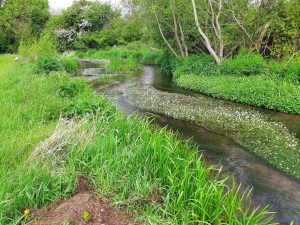
Ecology:
The incised channel only connects to its floodplain in extreme flood events, when higher than normal water velocity is maintained in-channel during small to medium flood events. Aquatic wildlife, such as juvenile fishes, may become swept downstream during high flow events. The steep banks also cause a lack of marginal transitional habitats which provide a refuge for wildlife in flood conditions.
Flooding downstream:
Flood risk may increase downstream, again caused because the incised channel cannot connect to its floodplain other than during extreme flood events. The problem is simply shifted downstream.
Addressing the impacts of weirs
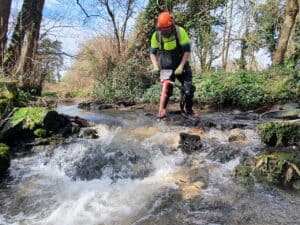
Removal of the weir should always be the considered as the preferred option, which solves all the issues described above. However, total removal is often not possible because of the way the landscape has developed since the weir was built.
Other factors that need to be considered include the wishes of landowners and river users, such as anglers, who might value the weir and its effect on the river.
The next best option might be a partial removal (lowering of the weir) and/or the implementation of a fish passage, which solves part of one problem (reducing the impounded reach) and all of another (connecting the upstream and downstream habitats). Fish passage solutions include natural bypass channels (which are preferred as they create additional habitat) rock ramps and baffles, as installed in 2023 by SERT at the Quester weir.
Essentially, any “solution” needs to provide fish with free movement and suit a range of fish sizes and flow speeds and depths that might be experienced at various times of the year.
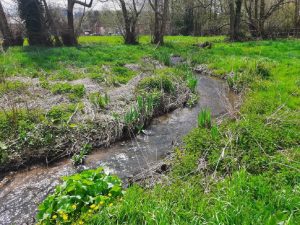
It also need to be delivered with usually tight budgets available.
Modelling, using an existing locally specific Environment Agency flood model is used to satisfy these needs and ensures no increase in flood risk for any nearby residential properties.
This approach is best practice and gives all interested parties the confidence to implement solutions with the simplest, and most cost effective design.
In the past few years, we have carried out several projects to improve passage for fish along the River Darent. This started with the removal of a large weir as part of the Acacia Hall River Restoration, completed in 2021. We have more recently installed an eel pass at the Questor weir in March 2022 and, in spring 2023, we constructed a fish pass using staggered baffles on the same estate.

